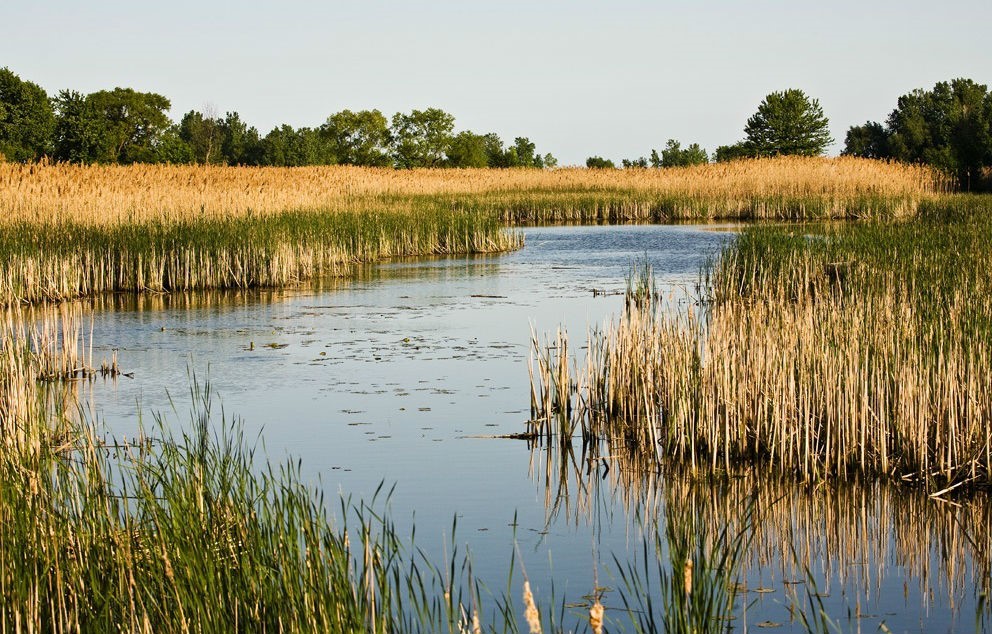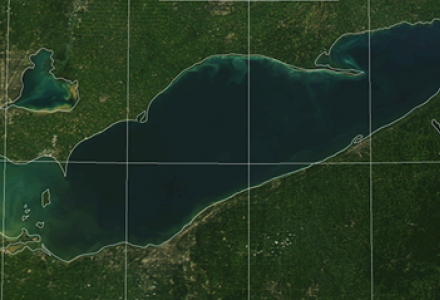
Several projects under the Great Lakes Water Quality Agreement were previously approved by Commissioners and are near completion. Final reports will be coming before new Commissioners for approval in the months ahead. Another pair of studies by the Health Professionals Advisory Board is underway, and both have been targeted for completion this year.
Science Advisory Board
The Science Advisory Board has four reports it hopes to finish up and publish this year, along with an update to a 2018 report.
The first report investigates the relationship between the nutrient-rich nearshore regions of the lakes and the nutrient-deprived offshore regions, and what this means for fish populations in the lakes.
Invasive mussels and an excess of nutrients like phosphorus and nitrogen entering the lakes (a process known as nutrient loading) are considered the primary culprits for this shift. Historically, Lake Superior has had this nutrient split in its waters but the other Great Lakes have been becoming that way in recent years. This report should prove useful to water managers working on these nutrient issues and to fisheries managers working to ensure stable fish populations continue in the Great Lakes.
The second report deals with goals to reduce the amount of phosphorus entering the waterways, and how these can be measured and communicated through the framework of adaptive management – essentially, ensuring that reductions are realistic and continue to account for changes in land-use practices and climate.
The board plans to finish work this year on a report detailing an approach to create a Great Lakes Early Warning System. This report will emphasize an organizational approach for an early warning system, and summarize five preliminary groups of threats and stressors, such as invasive species or contaminants. The goal is to ensure future threats to the environmental health of the Great Lakes can be identified and dealt with before they get out of hand, and identify existing threats that haven’t received adequate research or attention.
The board also plans to complete a project that assesses stressor interactions, with an emphasis on select stressor pairs that are highly relevant in the Great Lakes. For example, the impacts of invasive mussels and nearshore nutrients have synergistic effects --- their combined effects are greater than the sum of their individual effects. The project will be relevant to the management activities of governments, where stressors are typically managed individually.
Finally, the Science Advisory Board is updating its Fertilizer Application Patterns report from 2018 to include the most recent publicly-available Canadian data.
Water Quality Board
The Great Lakes Water Quality Board has two reports on its docket this year. The first focuses on the role wetlands play in coastal resiliency and mitigating flood and water quality risks in the Great Lakes. The board intends to provide recommendations to the IJC on ways the Canadian and US governments can achieve the Great Lakes Water Quality Agreement goal of a net gain in wetlands within the Great Lakes basin. A webinar was held in December 2018 with 400 experts to help develop these recommendations.

The board’s other report focuses on manure management from animal feeding operations in the Great Lakes basin. It will evaluate regulations, rules, policies and practices, with the goal of identifying opportunities to reduce nutrient runoff by strengthening manure management practices. The report should help inform the work of the governments under Annex 4 of the Great Lakes Water Quality Agreement (which focuses on nutrients), particularly for actions to manage and reduce phosphorus loadings into the lakes through the Lake Erie domestic action plans.
Health Professionals Advisory Board
Finally, the Health Professionals Advisory Board is working on two studies this year. The board continued work on a pilot investigation that started in 2017 with a goal of tracking waterborne acute gastrointestinal illness from drinking water exposure, and potential contributing influences in four cities across the Great Lakes: Hamilton and Toronto, Ontario, and Green Bay and Milwaukee, Wisconsin. The report is due at the end of 2019, and will examine the relationship between gastrointestinal illness, extreme weather events and the various indicators of water quality from drinking water intakes.
A second study will examine microbial contamination in the Great Lakes and how it has changed in the past century. This study follows up on one completed in 1913 by the IJC that tracked the sources of microbial contamination in nearshore waters and the potential human health implications from it. The latest report will use modern research techniques and a broader geographic sampling range to track the same parameters.

Kevin Bunch is a writer-communications specialist at the IJC’s US Section office in Washington, D.C.



